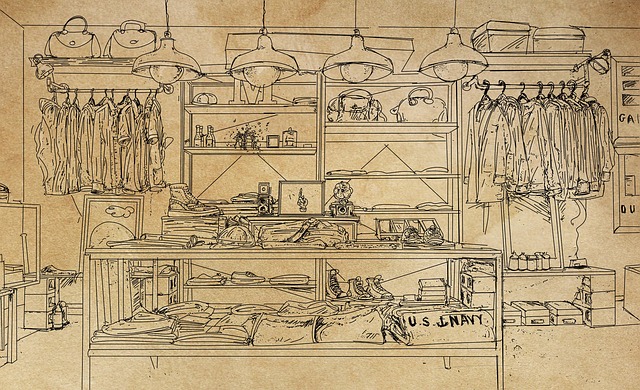Steel fabrication drawings are crucial for designing seismic-resistant structures, detailing precise measurements and structural roles to create flexible yet strong components that dissipate seismic energy, preventing collapse. These drawings guide fabrication from start to finish, incorporating specialized joints and fastening methods to ensure continuity and reinforce structural resilience against earthquakes. Modern engineers use advanced drawings featuring specialized nodes and joints, integrating computational models for stress analysis to design safe, stable, and aesthetically pleasing structures. Precise dimensions, tolerances, and detailed steel connections are vital for compliance with building codes, ensuring stability, minimizing risks during extreme conditions, and safeguarding occupants and infrastructure.
In regions prone to seismic activity, designing structures that withstand powerful tremors is paramount. Steel connection detailing plays a crucial role in achieving seismic-resistant buildings. This article delves into the intricacies of steel fabrication for seismic design, highlighting key elements like connection types and advanced techniques. By examining steel fabrication drawings, we explore how these innovations enhance structural integrity while ensuring safety and compliance in construction projects.
Understanding Steel Fabrication for Seismic Design
Understanding Steel Fabrication for Seismic Design is a cornerstone in creating structures that can withstand seismic activity. Steel fabrication drawings play a pivotal role here, outlining precise measurements and specifications to ensure every component is tailored for optimal strength and flexibility. These drawings detail not just the physical dimensions of steel members but also their structural roles, connecting them seamlessly into a robust framework.
Seismic-resistant design relies on fabricating steel elements that can deform without failure under extreme stress, dissipating seismic energy and preventing collapse. Accurate drawings guide the fabrication process, from cutting and welding to bending and joining, ensuring each piece fits perfectly within the larger structural puzzle. This meticulous approach is key to achieving the desired level of seismic resistance in buildings and infrastructure.
Key Elements of Steel Connection Detailing
In the realm of seismic-resistant structures, the key elements of steel connection detailing play a crucial role in ensuring structural integrity and safety during earthquakes. This involves meticulous planning and precise execution, starting with comprehensive steel fabrication drawings. These drawings not only outline the dimensions and specifications of each component but also detail the types of connections required to withstand seismic forces.
Critical aspects include joint design, fastening methods, and material selection. Properly designed steel joints, such as bolt-connected or welded connections, are essential for maintaining structural continuity. The use of high-strength bolts and appropriate welding techniques guarantees that the connections can resist significant lateral loads without failure. Moreover, these drawings should incorporate provisions for seismic-specific details like energy-dissipating devices and moment-resisting connections to further enhance the structure’s resilience.
Advanced Techniques for Enhanced Structural Integrity
In the pursuit of constructing seismic-resistant structures, advanced techniques in steel fabrication have emerged as a game-changer. Modern engineers and architects now leverage intricate steel fabrication drawings to create connections that surpass traditional methods. These innovative designs incorporate specialized nodes and joints, meticulously engineered to withstand lateral forces and deformations during seismic events. By optimizing material placement and utilizing cutting-edge joining technologies, the structural integrity of these buildings is significantly enhanced, ensuring safety and stability in the face of Earth’s unpredictable tremors.
The integration of advanced steel connection detailing involves sophisticated computational models that predict stress distribution and behavior under various load scenarios. This data-driven approach allows for precise adjustments to steel fabrication drawings, resulting in robust, flexible, and efficient structural frameworks. Moreover, these techniques enable architects to incorporate aesthetically pleasing designs while meeting stringent seismic resistance requirements, blurring the lines between structural necessity and architectural expression.
Ensuring Safety and Compliance in Construction Projects
Ensuring safety and compliance is paramount in construction projects, especially when designing seismic-resistant structures. Precise steel fabrication drawings are instrumental in this process, as they dictate the precise dimensions, tolerances, and specifications of each component. These detailed plans not only guarantee structural integrity but also align with regulatory standards set by building codes and engineering guidelines.
Comprehensive steel connection detailing is crucial to withstand seismic forces during an earthquake. Every joint, bolt, and welding configuration must be meticulously planned and executed to ensure the structure’s overall stability and performance under extreme conditions. Compliance with these drawings and specifications fosters a robust construction process, minimizing potential risks and ensuring the safety of occupants and nearby infrastructure.
Steel connection detailing plays a vital role in achieving seismic-resistant structures. By understanding the intricacies of steel fabrication for seismic design, focusing on key elements in connection detailing, embracing advanced techniques, and maintaining stringent safety and compliance standards, architects and engineers can create robust and secure buildings capable of withstanding even the most severe earthquakes. Incorporating these practices ensures structural integrity, protecting lives and investments alike, and is essential for navigating the challenges posed by seismic activity. Furthermore, leveraging steel fabrication drawings enables precise implementation of these detailed designs, ultimately contributing to a safer built environment.
